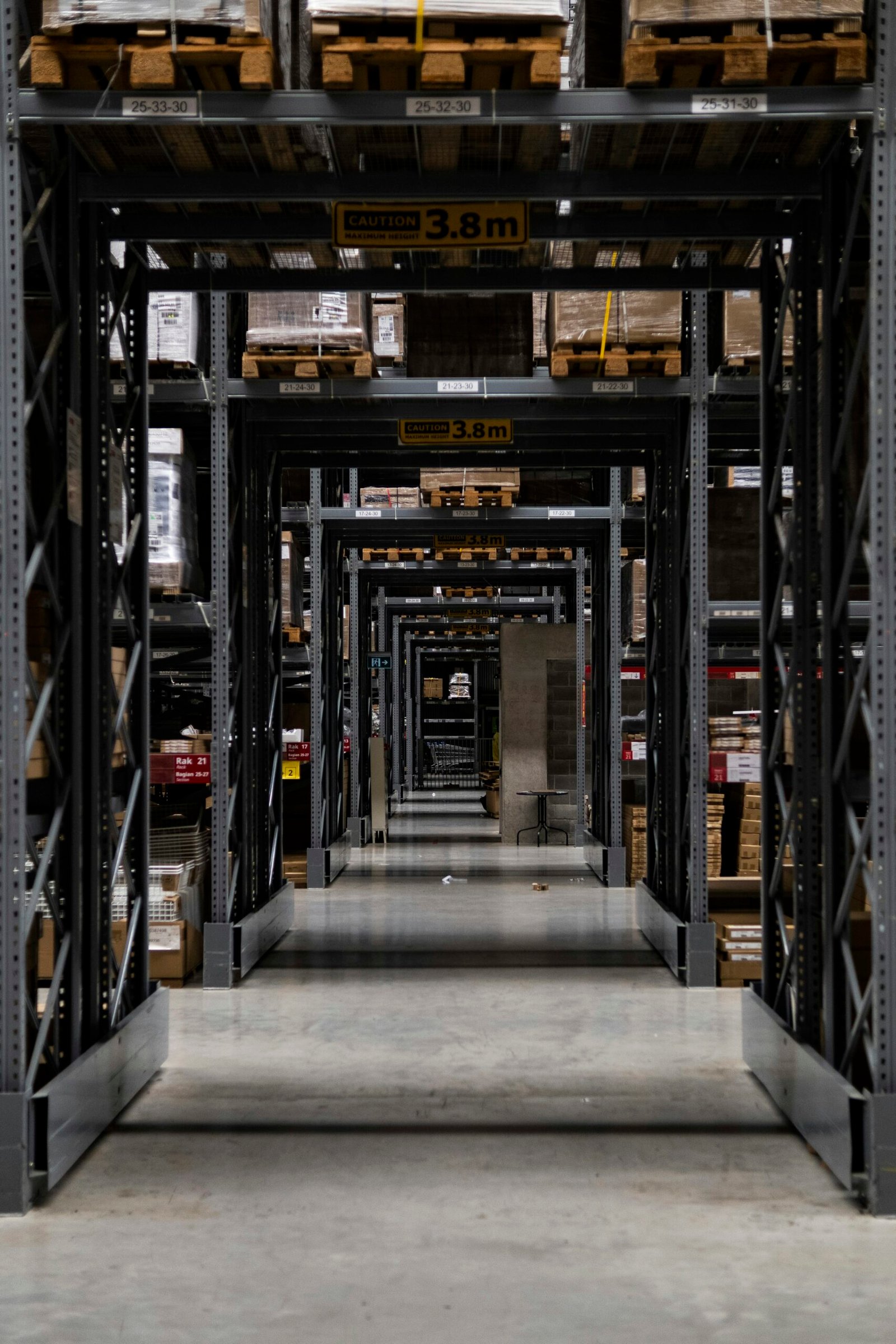Understanding Generative AI in Warehouse Operations
Generative AI refers to a class of artificial intelligence that leverages machine learning algorithms to analyze vast amounts of data and create new outputs based on learned patterns. In the context of warehouse operations, generative AI can significantly enhance efficiency and optimize logistics processes. At its core, this technology operates through advanced data analysis techniques, enabling organizations to effectively manage their warehouse systems by streamlining various components such as layout design, inventory management, and order fulfillment.
One of the primary applications of generative AI in warehouse operations is the optimization of warehouse layout. By analyzing historical data along with real-time metrics, AI can suggest the most effective arrangement of shelving and storage units. This not only maximizes space utilization but also minimizes walking distances for staff, thereby speeding up the picking process. Furthermore, the predictive capabilities of generative AI allow warehouses to anticipate demand fluctuations by analyzing trends and adjusting inventory levels accordingly. This results in improved stock management and reduced overhead costs.
Order fulfillment processes also benefit immensely from the implementation of generative AI. The technology can automatically assign tasks to warehouse personnel based on a variety of factors, including current workload, skill levels, and geographic location within the warehouse. By doing this, generative AI ensures that orders are processed swiftly, enhancing overall customer satisfaction. The inclusion of generative AI within warehouse management systems represents a significant evolution in warehousing technology, offering businesses the ability to adapt in a fast-paced and ever-changing market.
Embracing AI solutions not only improves operational performance but also equips warehouses to respond proactively to new challenges. As industries increasingly lean on digital transformations, adopting generative AI serves as a crucial component in advancing warehouse capabilities and maintaining a competitive edge.
Enhancing Efficiency and Productivity Through AI Models
Generative AI models have emerged as transformative tools in the realm of warehouse planning, significantly enhancing efficiency and productivity in operations. By leveraging advanced algorithms and machine learning techniques, these models offer innovative solutions for various aspects of warehouse management, ranging from space utilization to inventory tracking.
One of the key benefits of implementing generative AI in warehouses is its ability to optimize space. Traditional warehouse layouts often become inefficient over time due to the dynamic nature of inventory and fluctuating demand. AI-driven systems can analyze historical data and predict future trends, enabling warehouses to adapt their layouts accordingly. This results in improved space utilization, allowing businesses to store more products without the need for physical expansion. With AI models predicting optimal storage locations, companies can minimize wasted space and ensure that high-velocity items are easily accessible, thereby improving order fulfillment rates.
Additionally, generative AI contributes significantly to streamlining inventory management processes. By employing predictive analytics, these models can forecast inventory needs with high accuracy, reducing the chances of stockouts or overstock situations. Enhanced inventory management not only leads to cost savings through reduced excess inventory but also improves cash flow by ensuring products are available when needed. Companies utilizing AI-powered inventory management systems have reported a marked improvement in order accuracy, which directly impacts customer satisfaction.
Moreover, the pick-and-pack processes within warehouses can benefit greatly from the implementation of generative AI. These models facilitate optimized routing for warehouse associates, reducing time spent on picking items from different locations. Case studies show that organizations that integrated AI into their planning have experienced significant reductions in turnaround times. For instance, one leading logistics firm reported a 30% increase in productivity during peak seasons after adopting a generative AI-driven approach.
In essence, the integration of generative AI into warehouse planning not only enhances efficiency but also profoundly boosts productivity, showcasing metrics-driven success that benefits both companies and their customers.
Predictive Analytics: Forecasting Demand and Inventory Needs
Generative AI is revolutionizing warehouse planning through its incorporation of predictive analytics, a crucial component for accurately forecasting demand and managing inventory levels. By analyzing historical data and employing sophisticated algorithms, generative AI can discern patterns and trends that human analysts might overlook. This capacity enables businesses to better anticipate fluctuations in market demand and adjust their inventory strategies accordingly.
Techniques such as data mining and trend analysis allow generative AI to extract valuable insights from vast datasets. Data mining helps in identifying underlying relationships and variables that affect demand, while trend analysis focuses on recognizing historical patterns that may repeat in the future. Furthermore, simulation models can project different scenarios based on various input parameters, offering firms a comprehensive understanding of potential demand shifts. This forward-looking approach ultimately minimizes the risk of stockouts and overstock situations, both of which can have significant financial implications for businesses.
One of the standout advantages of generative AI in inventory management is its ability to integrate real-time data. With the continuous flow of information from various sources, such as sales data and market trends, organizations can make informed decisions swiftly. This capability not only enhances responsiveness to changing conditions but also serves to optimize stock levels effectively. Real-time data integration ensures that businesses are not only reacting to past performance but also envisioning future trends, enabling proactive decision-making processes.
In conclusion, the transformative role of generative AI in predictive analytics empowers businesses to refine their demand forecasting and inventory management practices, setting the stage for more efficient and responsive warehouse operations.
Future Trends: The Next Frontier of AI-Driven Warehouse Solutions
The landscape of warehouse planning is rapidly evolving, driven by the advent of generative AI technologies. As organizations seek increased efficiency, emerging trends are set to redefine how warehouses operate. Notably, autonomous vehicles and robotics are expected to take center stage in streamlining logistics. These innovations not only enhance productivity but also reduce human error, thereby transforming the warehouse ecosystem into a largely automated environment.
Moreover, smart warehousing systems leveraging AI and machine learning will enable companies to optimize their inventory management and improve forecasting accuracy. Predictive analytics, powered by generative AI, can offer insights into future demands, allowing businesses to better plan their logistics and reduce excess inventory. This shift will ultimately lead to leaner operations and more agile responses to market fluctuations.
However, the transition to these advanced technologies is not without its challenges. Companies may face significant implications regarding their workforce as automation may replace certain roles, necessitating a focus on retraining and upskilling employees to ensure they remain relevant in an increasingly digital environment. Furthermore, data security concerns may arise as warehouses adopt connected systems, heightening the need for robust cybersecurity measures to protect sensitive information.
The need for ongoing training and development is critical, as organizations will have to equip their staff with the skills necessary to navigate and manage these sophisticated technologies effectively. As the integration of generative AI continues to grow, it is critical for companies to formulate strategies that address both technological advancements and the human elements involved in warehouse operations.
In envisioning the future, generative AI holds the potential to not only enhance operational efficiency but also redefine the supply chain landscape. By embracing these trends, organizations can position themselves at the forefront of industry innovation, ultimately leading to a more resilient and responsive supply chain system in the years to come.









